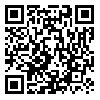BibTeX | RIS | EndNote | Medlars | ProCite | Reference Manager | RefWorks
Send citation to:
URL: http://irancounseling.ir/journal/article-1-31-en.html
The purpose of present study was to investigate the role of secondary trauma as a mediator in relationship between attachment styles and father-child conflict. This study was a correlational research that carried out by structural equation modeling. warfare victims’ children living in Yazd, Esfahan, Najafabad, and Yasuj and studying at Shahed and Isargar Schools of these cities were the target population in this study. Of this population, 607 subjects were selected by cluster sampling method. Secondary traumatic stress scale (STSS), Adult Attachment Scale and Parent-Child Conflict Tactics Scale (PCTS) were used to collect the data. Finally, correlational analysis and structural equation modeling used to analyze the data. The findings show that insecure avoidant and insecure ambivalent attachment by secondary trauma significantly related with verbal and physical aggression. Secure attachment style was not any direct and indirect relationship with father-child conflict. But, insecure avoidant attachment has a direct relationship with reasoning and verbal aggression. Finally, fit index show that proposed model in present study was confirmed with a few modification. With regarding Findings of the current study can conclude that secondary trauma has a significant role as a mediating factor in relationship between insecure attachment styles and father-child conflict and therefore probably told that teachings based on attachment styles prevent transmission of secondary trauma and then father-child conflicts in Warfare Victims’ Children.
Received: 2015/10/10 | Accepted: 2016/04/6 | Published: 2016/10/1
| Rights and permissions | |
 |
This work is licensed under a Creative Commons Attribution-NonCommercial 4.0 International License. |




